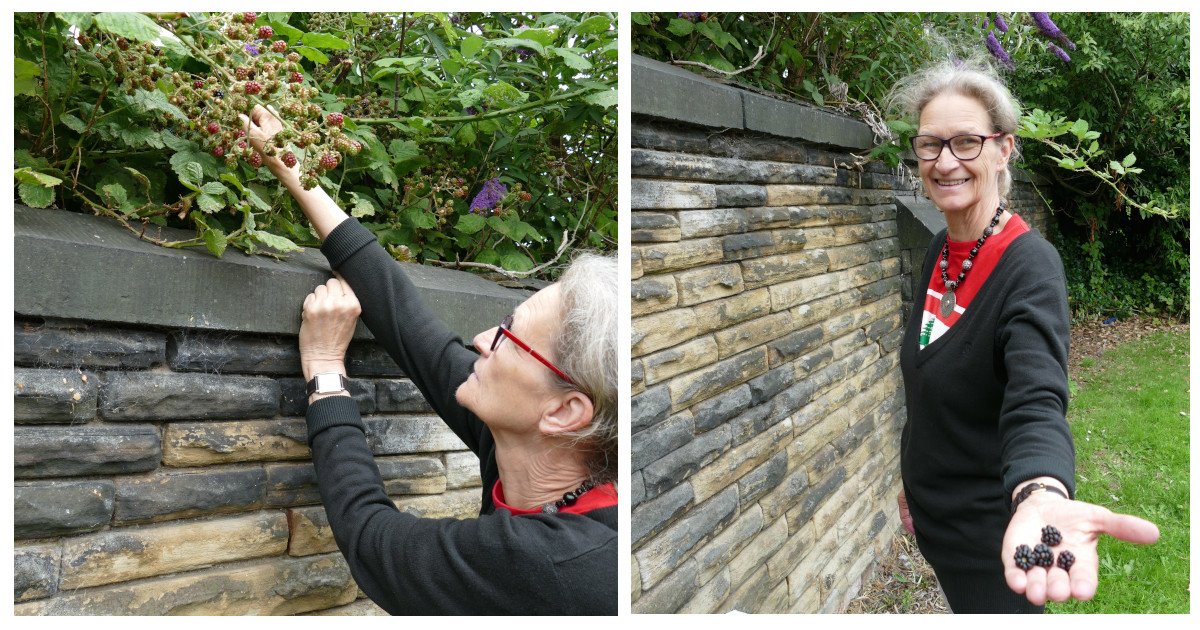It’s all very well to talk about the challenges of dementia for those diagnosed and their caregivers. But it’s easy to forget that if you have a parent with dementia there can be enormous stress too — emotional and perhaps financial. Chances are you’ll find yourself facing some of life’s most agonising decisions. We have a plan to take the agony away.

‘Won’t someone open this door?’
Around three years after my wife Lena was diagnosed with early-onset Alzheimer’s, I had a text from our daughter, Josie. She was at a care home, visiting her partner’s elderly grandad. But it was a woman there she noticed.
“There’s a lady here, just like Mum, and she keeps coming past every 10 minutes and trying to open the back door to get into the garden. And now she’s talking to us and asking, in broken English: ‘Won’t someone open this door. I want to get out.’ She’s got her handbag and she’s all set to go. But there’s no escape.
All I can see is Mum at home, or at my house, standing at the door when she’s tired or fed up, waiting to go somewhere, anywhere. But Mum’s with family, and this poor lady is amongst strangers. A couple of them are yelling at her to stop looking for the door. Everyone else pretends not to notice.
It’s just so heart-breaking, I can’t stop the tears. To think that it can come to this! It won’t come to this for us, will it?”
This is not a rant against care-homes. They have a place, an important place, in the spectrum of care options. There are circumstances when full-time residential care is the kindest choice – when the physical demands of care at home get too great, for instance. Or when there’s nobody available to help a person with dementia, and they’ve reached the point where their safety is at risk.
Care at home or away?
But Josie’s reaction to the lady with the handbag expresses what most of us feel about the care of our loved ones. If it comes to a choice between keeping a parent with dementia at home amongst family and friends or moving them permanently into the hands of strangers, then please let it be possible for them to stay at home.
The trouble is, right now, it often isn’t possible. This is when the emotional stress of dementia can be almost unbearable.
Suppose your parent with dementia lives alone and you invite them to live with you – or you go to live with them. How will becoming a carer affect your life? Maybe you’ll have to give up your job, or at least reduce your hours. So how will you pay the mortgage? And what about those holidays you’ve been planning? How will the move affect your relationship with your partner, or your own kids? What sacrifices are you prepared to make?
Or maybe both parents are around, and one of them is the carer. You see the carer-parent beginning to struggle, and sense that depression is setting in. You know you should be there for them, to offer more help, but your own life is taking you in a different direction …
So, after all, maybe a care-home would be for the best. But where? Of course you want the best for your parent, but how much is that going to cost? You see figures quoted: £70,000 a year – more if nursing care is required …
The Bine – home AND away
For many, the Care Combine’s solution, The Bine, will take all those anxieties away. This is how:
The person with dementia …
… continues to live at home, but spends the daytime hours in the Bine Centre on the High Street. Every day, seven days a week. Doing what? Well, not looking for the exit door. Josie’s lady with the handbag was sending a message: she felt bored, imprisoned – that’s why she wanted to escape.

Hours spent at The Bine are filled with meaningful, purposeful activities and projects. For example, in the autumn, some might go out for walks and foraging. They use the berries they’ve collected as they mix ingredients for baking. Then they sell the cakes in the Bine coffee shop, popular with mums who drop by with their toddlers for a chat after dropping off the bigger kids at school. There’s plenty of help for those who struggle with the activities: for every three people with dementia there’s always at least one member of staff or helper. The Bine’s a community, safe, a place where good things happen.
Meanwhile, their carers ...
… are released from their responsibilities for the whole working-day. For eight hours, every day of the week, they’re able to get back to the life they knew before dementia. Perhaps they’ll go back to old jobs or interests. Perhaps they’ll take up new ones. Or maybe they too will want to spend their time at the Bine, enjoying the activities. They’ll still be providing care – but now as part of a sharing community instead of struggling to cope with everything themselves.
In fact, there’s a big benefit if they do volunteer to help at least two days a week – because that’ll pay for their loved one with dementia – Bine membership will be free. With time to become themselves again, carers will be refreshed and strengthened for the job they still have to do back at home in the evening.
Their grown-up children …
… can relax now. That care-home decision can be delayed – maybe for years, until the physical condition declines to the point where living at home becomes impossible. Their parent with dementia spends the day with friends and the evenings with family. They’ve seen at first hand how much fun the Bine is when they and their own kids go along to join in the Bine activities themselves – they’re always made to feel welcome. The family carer is doing so much better too, now that the burden of care has shifted and they’re enjoying a normal life again.
And what about the cost of dementia now? Well even if nobody in the family has time to volunteer at the Bine, the full membership fee for this fully-engaged care is less than half the cost of residential care. But for those who choose to join in and help at the Bine for just the two days a week (or more if they want to), membership for their family member won’t cost a penny.
The Care Combine – the next steps
Josie’s mum, Lena, was formally diagnosed with Alzheimers in 2013, some five years after we in the family started noticing she was struggling with memory problems. Just as Josie had hoped, we did manage to care for Lena at home right till the end of her battle against dementia in 2025. She was never separated from the family she loved.
Sadly, the idea for The Care Combine didn’t emerge early enough for Lena. In her final years, as she became bed-bound, membership of The Bine would clearly have been out of the question for her. But her journey with dementia was a long one, as it is for so many other patients. For at least 10 years, membership of The Bine would have been perfect, both for Lena and myself, her full-time carer. And Josie wouldn’t have fretted, knowing that her mother was in good hands. Her father too.
So what next? How do we turn this idea into reality? Who will set up these Bine Centres? How will they be funded? Will there be some kind of formal organisation — a charity perhaps? Where will the professional staff come from and how will they be trained? How can we ensure that vulnerable Bine participants are kept safe? What about dementia patients who have no family carer to volunteer locally — will they have to pay? How do we begin? And, bearing in mind that dementia is a global issue with the numbers of those diagnosed currently doubling every 20 years, how far and how quickly can our Care Combine project spread?
These are the questions I’ll be addressing in my Care Combine articles in the coming weeks. I look forward to your feedback, support, and — as I describe some of the opportunities for participation — perhaps even your involvement.
+ + + + +
Read The Care Combine manifesto — a statement of our objectives and how we plan to achieve them.

